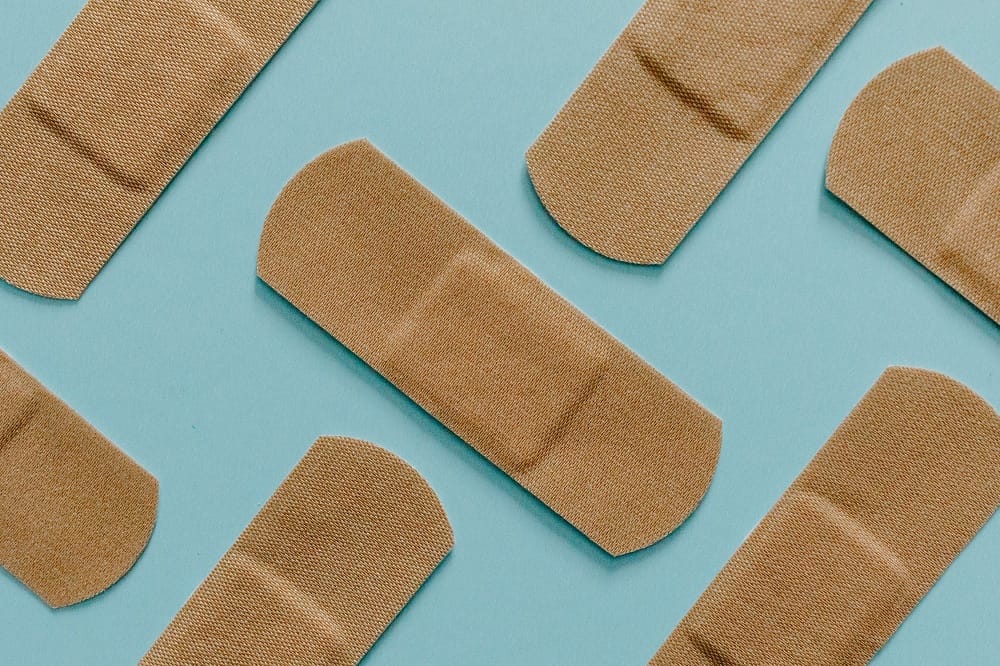A plaster should primarily protect the wound from contamination and offer optical protection. With these tips you can use the patch correctly and remove it painlessly.
Correct Application
Thoroughly clean your hands with water, soap and possibly with a (nail) brush before starting the wound treatment. Do not wash out deep wounds. However, abrasions should be rinsed off with cold water. The plaster for wounds has to stick well. The place where the patch will stick should therefore be clean, dry and free of grease.
Do not touch the dressing pads with your hands. Otherwise, germs can be transmitted. The sticky side of the patch should not come directly onto the wound. The wound pad must therefore be larger than the wound itself.

A Wet Patch Must Be Changed Immediately.
If the skin is irritated by the patch, apply the patch to a different area of skin after changing for example, by turning the plaster 90 degrees. There should be no water on the wound for the first few days. If the plaster sticks to the wound, don’t just tear it off: you can soak it with lukewarm water and then carefully peel it off. Never peel off the wound crust, it protects the wound and falls off as soon as skin has formed again as the wound has healed. If the wound is very deep and contaminated, it must be able to breathe easily. It is advisable to use breathable plasters.
How Do I Remove a Patch Painlessly?
For smaller wounds, the plaster can be torn off quickly and jaggedly and therefore as painlessly as possible. If you sprinkle a little baby oil on the plaster, the contact between the adhesive and the skin is broken. This allows the plaster to be removed painlessly. If the plaster has grown together with the dried blood, you can spray it with disinfectant and let it take effect. The plaster can then be removed without any problems. Children who are afraid of removing the plaster are best placed in the bathtub and wait until the plaster comes off a little in the lukewarm water. Then you can easily remove it.
How Often Should I Change a Patch?
It depends on the type and location of the injury. Bacteria or dirt can quickly get into cuts on the finger, for example. Therefore, the patch should be changed several times a day at this point. On the other hand, if the patch remains clean and dry, it can stick for a few days if the damage is superficial.
Do I Need an Ointment Under the Plaster?
Not necessarily. In the case of superficial abrasions, it is sufficient to cover them with a simple plaster. Many modern plasters also already contain components that ensure that a wound does not dry out even without ointment this promotes wound healing and prevents the formation of hubs. Consult a doctor for deeper cuts.
Can I Still Use Expired Patches?
Normal adhesive plasters cannot actually run off, but they lose their adhesive strength. However, sterile plasters lose their sterility over time due to external influences and should therefore be replaced regularly. It is different with patches that contain active ingredients. As with drugs, their effectiveness may change after the expiration date. They should therefore no longer be used.

